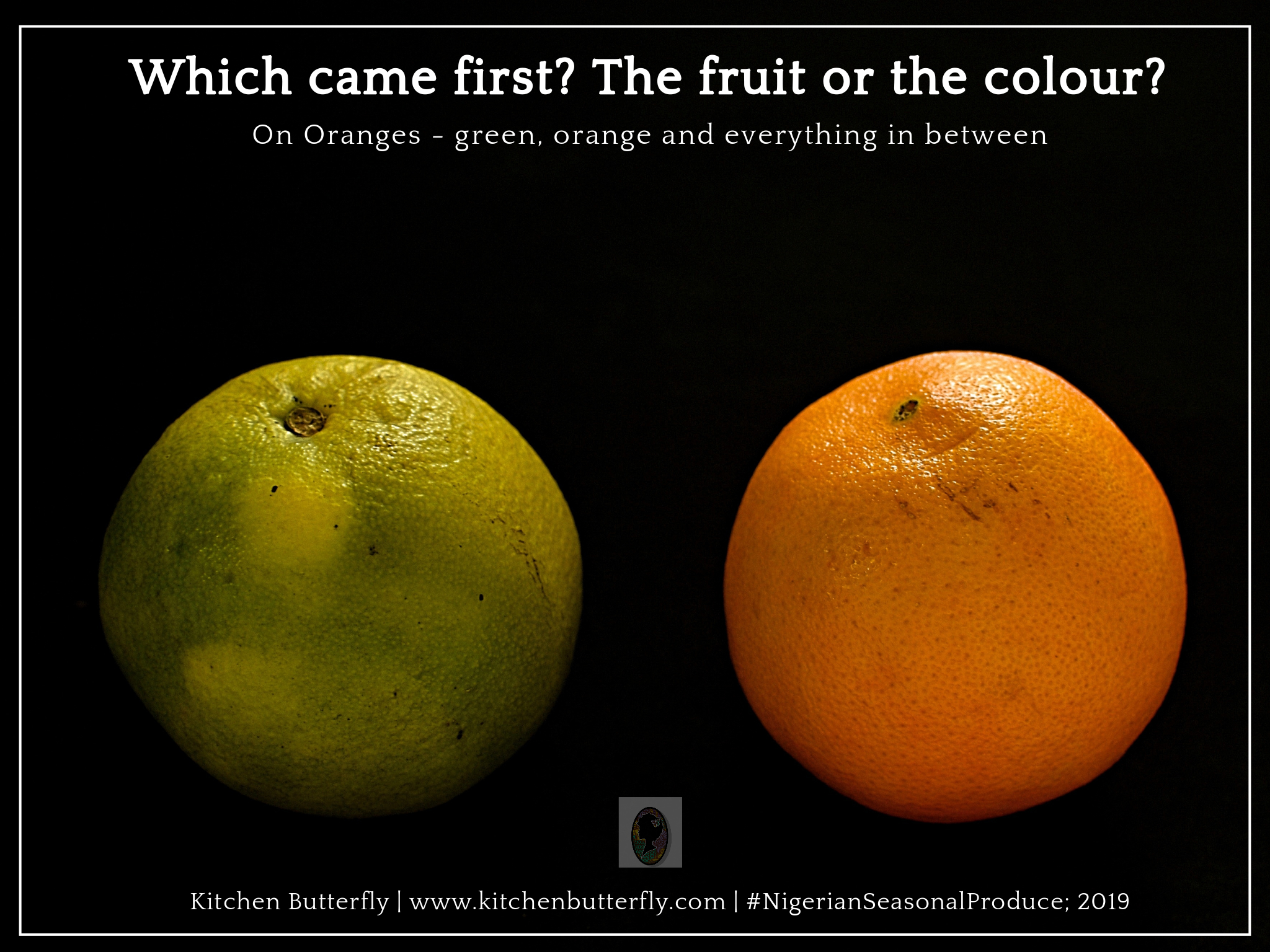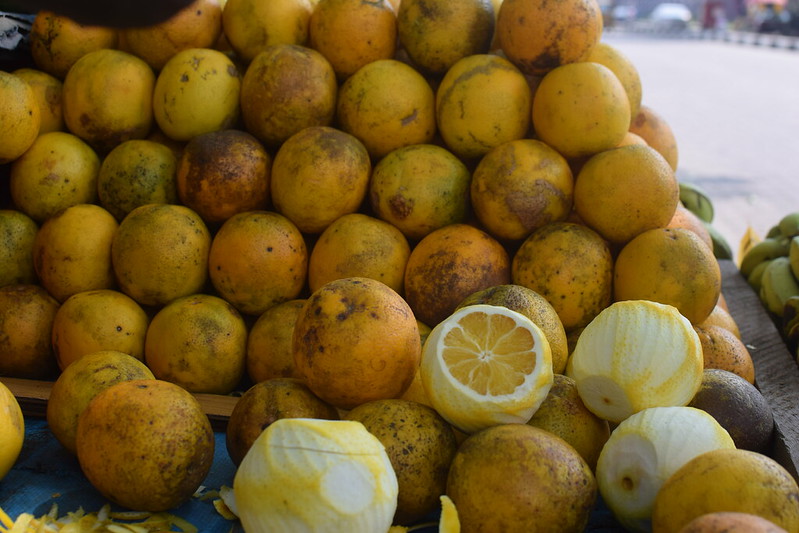It’s true. Forget everything you thought you knew! Oranges can be green, yellow, orange and shades in between.
I raised three children on ‘orange’ oranges, dutifully bought from our local Albert Heijn in Wassenaar. They learnt to eat them quartered mostly and loved them.
And then we moved to Nigeria, to green and almost sunshine yellow oranges and my children were confused.
It hadn’t really occurred to me before this that there was a difference because I grew up on green oranges and orange oranges were the stuff we watched on TV when it showed us the world and other possibilities.
And they made the very first point – why are they called oranges if they aren’t orange?
You might want to know what oranges are in the first instance. So they are a cultivated fruit, a cross between tangerines and pomelos unknown in the wild.
#1. What came first – the fruit or the colour? The fruit!
The earliest recorded use of orange in English is from the 1300s where ‘pume orenge‘ is mentioned in adjectival form in an Anglo-Norman manuscript.
Orange the fruit came first. The word came into English either from Old French ‘pomme d’orenge’, or from the Spanish ‘naranja’ (with the subsequent transfer of the ‘n’ over to the indefinite article, as per ‘apron’ and ‘adder’, originally ‘napron’ and ‘nadder’). The Spanish word is itself a modification of the Arabic ‘naaranj’ (cf. also Persian ‘naarang’). Our colour term thus derives from the name of the fruit, not the other way round; Source – The Guardian“
#2. When was orange first used as a colour? 1541
The early 1500s.
English speakers probably didn’t have a specific name for the color until the fruit was widely available in their markets and inspired one. Before then, linguists believe people generally referred to orange as “yellow-red,” ġeolurēad in Old English.
#3 Where does the colour come from?
The colours in most fruits are dictated by photosynthetic pigments.
In green fruits, chlorophyll is largely responsible and in orange ones, carotenes.
Temperature plays a role in determining what colours are latent/ dominant, how much light is absorbed, wavelengths and all sorts of scientific aspects which I can’t do justice…think of the visible light spectrum aka the action spectrum? Does that play a role in the colours we see and where we see them?
In Nigeria, oranges retain a lot of the chlorophyll created because of the large amount of sunshine they receive. In temperate countries, oranges are often ‘cold-shocked’ to allow the orange color shine through. Or exposed to ethylene gas, which fragments the chlorophyll and releases the beta carotenes.
#4. Who else has green oranges?
Many tropical countries in West, East, Central Africa, SE Asia, South America and the Caribbean.
So, there, some about which came first? The fruit or the colour!
Share what you can! Thank you!!






[…] far from home, away from the source of that joy, I can bask in the joy here – of juice oranges and ugli, sanguinello and kumquats, tangerines, tangelos, mandarins and more. Meyers, lime, lemons, […]
[…] I had to get some ‘oranges’. Which in Nigeria don’t quite have the Valencia orange skin on the outside. Imagine the utter shock for my kids when we arrived in August and I gave them some oranges. They were totally confused by the lack of orange colour. […]
[…] the colour spectrum of ripeness for peppers, green are the kickoff point, because chlorophyll. Like with oranges, as ripening progresses, chlorophyll decay […]
Very Interesting
I enloyed your write up.
You are very good.
How did you get your kids to like oranges.
My son won’t touch it.
Cheers
Onome
Thank you. I didn’t have to do anything to be honest to get them to like it. You can share one with him – and try different cuts, maybe seeing you eat it might encourage him.